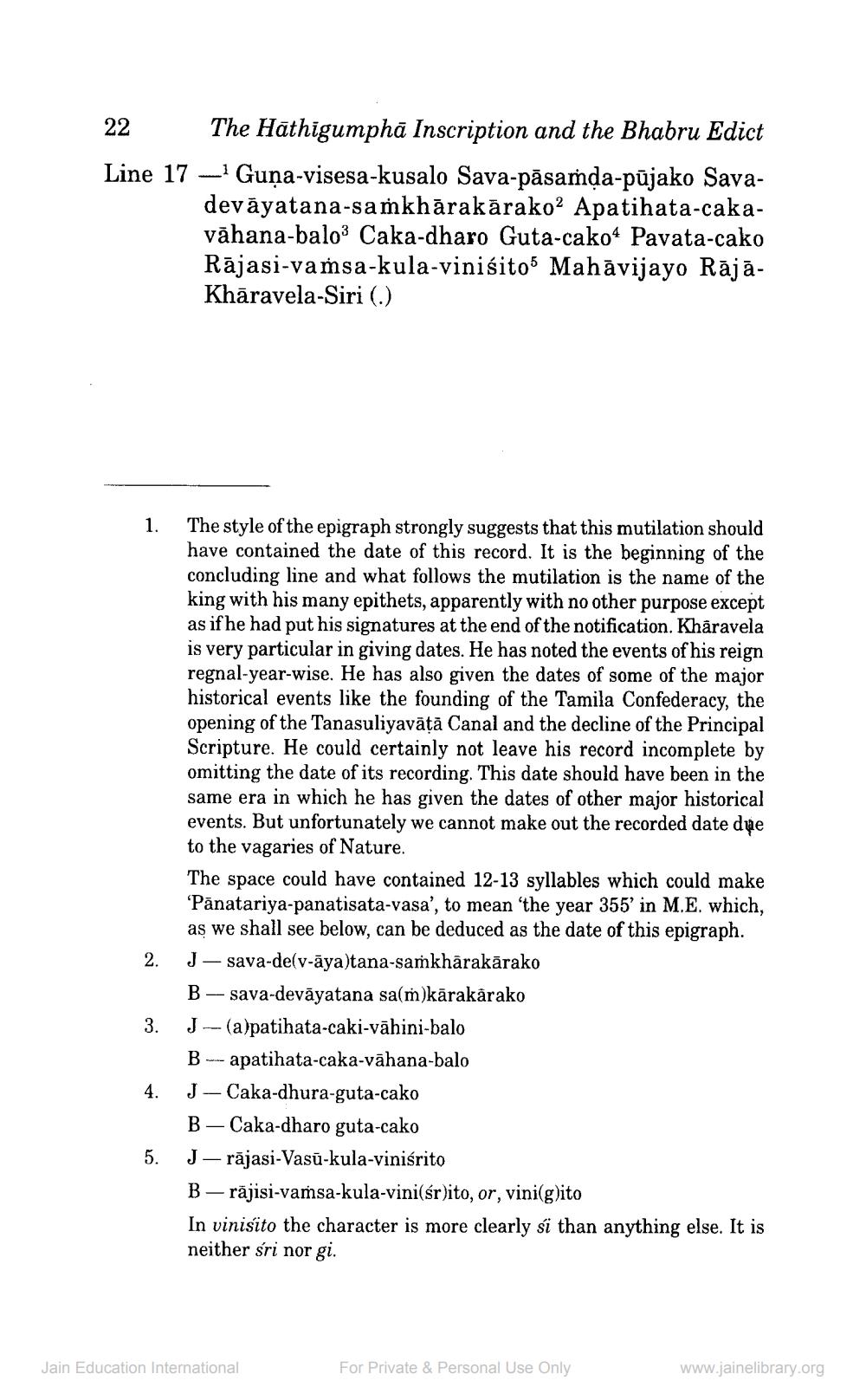________________
22 The Hāthigumphā Inscription and the Bhabru Edict Line 17 - Guņa-visesa-kusalo Sava-pāsamda-pūjako Sava
devāyatana-samkhārakārako? Apatihata-cakavāhana-balo3 Caka-dharo Guta-cako4 Pavata-cako Rājasi-vamsa-kula-vinisito5 Mahāvijayo RājāKhāravela-Siri (.)
The style of the epigraph strongly suggests that this mutilation should have contained the date of this record. It is the beginning of the concluding line and what follows the mutilation is the name of the king with his many epithets, apparently with no other purpose except as if he had put his signatures at the end of the notification. Khåravela is very particular in giving dates. He has noted the events of his reign regnal-year-wise. He has also given the dates of some of the major historical events like the founding of the Tamila Confederacy, the opening of the Tanasuliyavātā Canal and the decline of the Principal Scripture. He could certainly not leave his record incomplete by omitting the date of its recording. This date should have been in the same era in which he has given the dates of other major historical events. But unfortunately we cannot make out the recorded date due to the vagaries of Nature. The space could have contained 12-13 syllables which could make Pänatariya-panatisata-vasa', to mean the year 355' in M.E. which, as we shall see below, can be deduced as the date of this epigraph. J - sava-de(v-āya)tana-samkhārakārako B - sava-devāyatana sa(m)kārakarako J ---(a)patihata-caki-vāhini-balo B --- apatihata-caka-vāhana-balo J– Caka-dhura-guta-cako B - Caka-dharo guta-cako J—rājasi-Vasū-kula-viniírito B - räjisi-vamsa-kula-vini(sr)ito, or, vini(g)ito In vinisito the character is more clearly si than anything else. It is neither sri nor gi.
2.
4.
Jain Education International
For Private & Personal Use Only
www.jainelibrary.org




